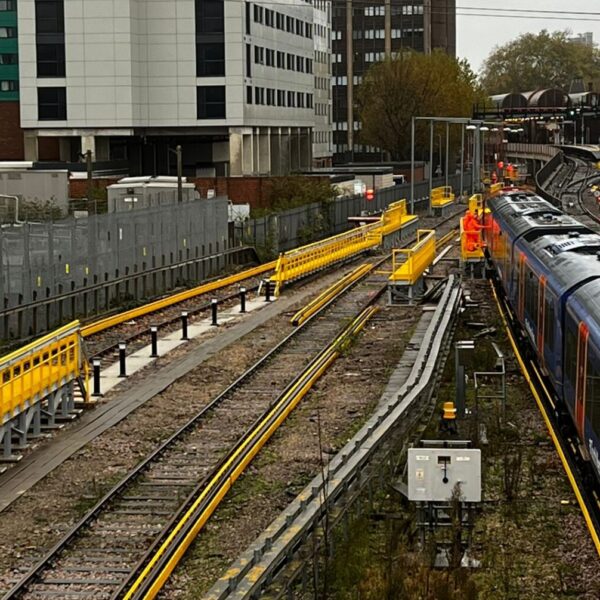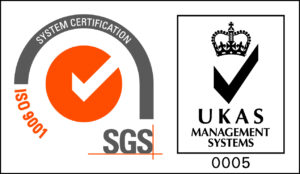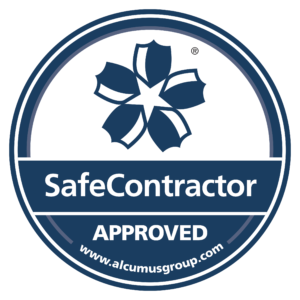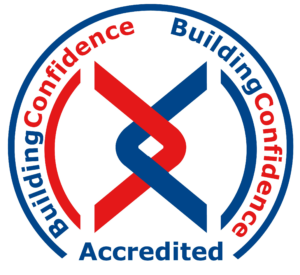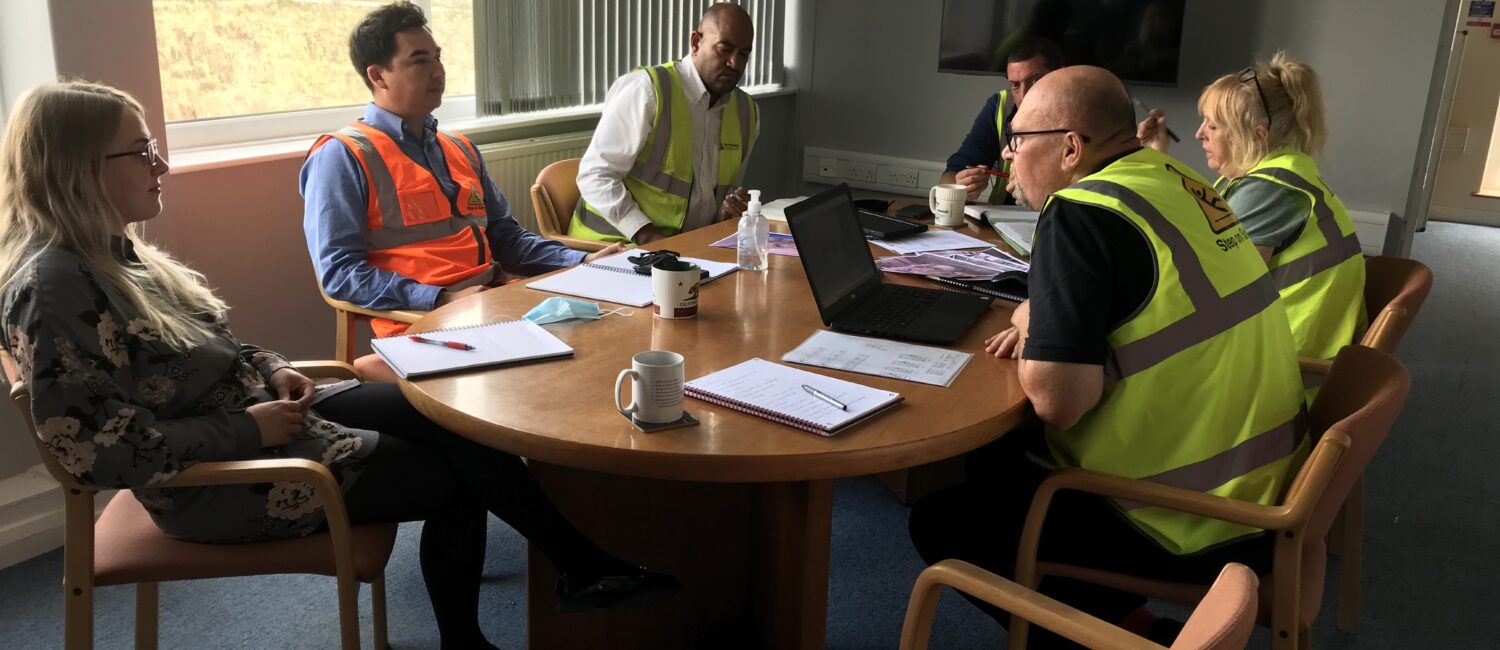
Team Effort
Whatever project we’re about to begin, the first step in our process is to hold a Pre-Start Meeting. The one pictured is for a small job for a new client, installing a couple of access platforms. It’s important that this project goes well as there’s potential for more work in the future – but the format is the same for most jobs and is considered vital to get each one started on the right foot.
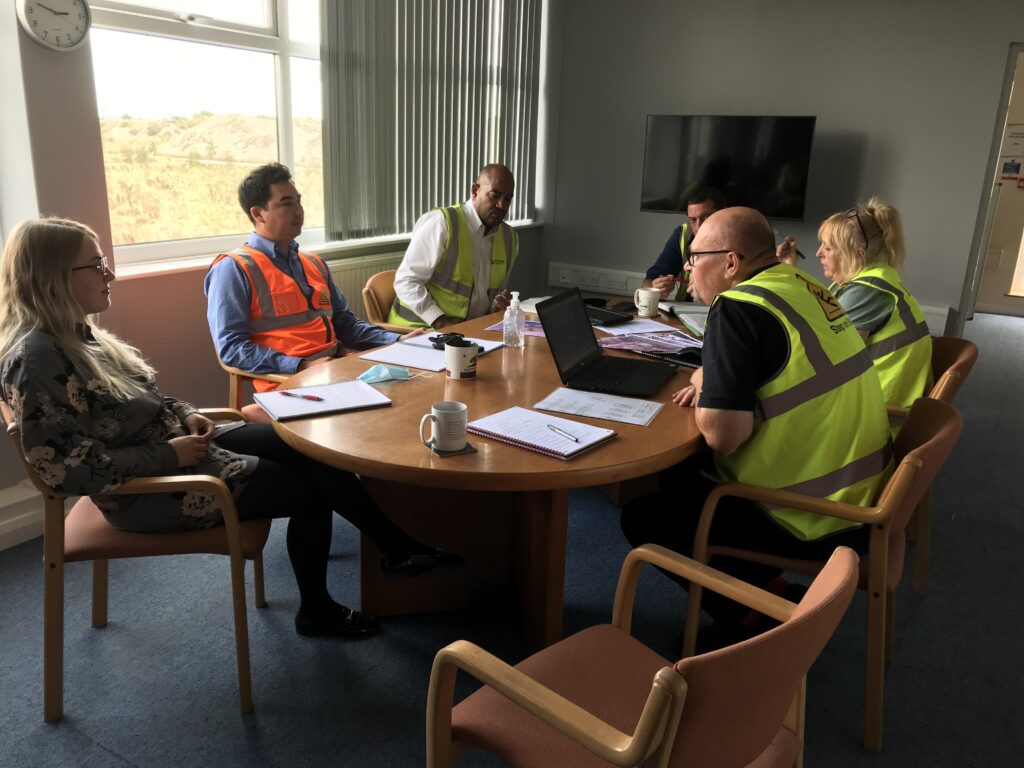
The Attendees
The Sales Manager and Business Development Manager have worked closely with the client and our Costing team to agree what was required and how much it would cost. The BDM will remain the customer’s main point of contact throughout the project so it’s vital he’s kept in the loop at all times to ensure the promises he’s made are kept by the other teams involved. The Costing team isn’t represented today as their part in the project is hopefully complete but, if changes to the original spec are required, it’s possible they’ll be involved again at a later date.
The Site Supervisor will be in charge of the team installing the platforms. He’s visited the site and is responsible for checking there is nothing there that could cause delays. He knows where the job is, what the platforms are for and how they’ll need to be fixed in place.
The Health & Safety Manager is there to ensure our teams are protected while on site. Will they be able to safely get the components to where they need to be? Are there stairs or ladders to navigate? How heavy will the sections be? Is there a site induction procedure that must be completed? Are there any special PPE requirements? What are the COVID-19 protocols in place?
The CAD Designer will need to consider the findings of any surveys, the concerns of the Site Supervisor and H&S Manager and, most importantly, the requirements and expectations of the customer to create a set of drawings the Workshop Manager can give his fabricators. The drawings will be signed off by the BDM and the client before production can start so they need to be produced in a timely manner.
Next up, the Logistics Manager. It’s her job to get the right people with the correct experience and qualifications booked for the installation. She’ll arrange for transport of the fabrication and the team, booking fleet vehicles and hotel stays for longer jobs that are far from home.
The Sales Admin Manager will allocate the materials needed for the project making sure the supplies are available when the Workshop Manager is ready to build. He manages the resources within the workshop, making sure the right people have the space to work and access to the tools they need to get the job done on time.
Each link in the process chain is vital to any project as errors and delays could affect the delivery date. By meeting at the very start, everyone knows that a new project is on its way – they’ll know when their part of the process is expected by and, if there is a hiccup at any stage, it can be quickly identified and resolved before it affects the customer. Our mission is to fulfil every order on time, in full, every time and only by working together can this be achieved.
So, what happens if something goes wrong, and the customer is not completely satisfied with the end result? There are many factors that can affect an outcome. Weather, traffic, equipment failure, staff sickness and materials availability can usually be negated by good planning. Errors, mistakes, misunderstandings or carelessness can be avoided with good communication, careful quality control and training. At Step on Safety, we constantly strive to achieve perfection. However, if there is a problem, our first priority is to put it right – whatever it takes and whatever may have caused the issue. We guarantee that customers’ calls will never be ignored or avoided, that emails will always be answered and that we will fix the issue – whatever it is. Once our client is happy, we’ll review what happened and work towards a solution that will prevent it from happening again.
Working together as a team.


